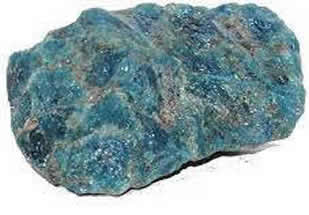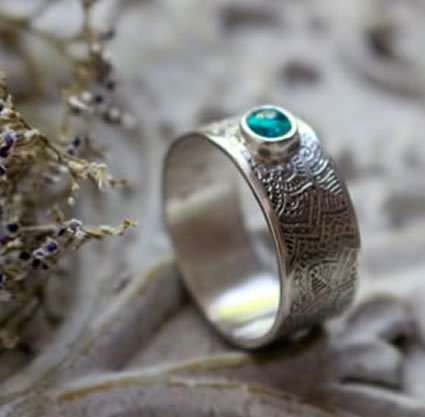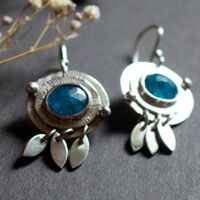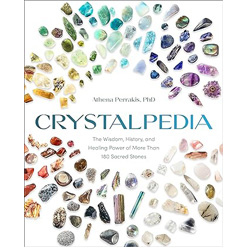- Jewelry
- Inspiration
- Our imagination
- Birthstones
- Celebrating with Eternal Flowers
- Druids and druidesses
- Flower meanings
- History, archeology jewelry
- History and healing properties of metals
- History and healing properties of stone
- Illumination jewelry
- Japanese symbols
- Maya calendar jewelry
- Stone color symbolism
- Stones catalogue
- Wedding anniversaries
- Searches a theme on the site
- Good Deals
- Paintings
- About
- Contact
JEWELRY
- Anklet
- Bracelets
- Brooches
- Cufflinks
- Earrings
- Pendants & Necklaces
- Rings
- Draw your jewelry
- How to clean your jewel
- Metal we used
INSPIRATION
- Our imagination
- Birthstones
- Celebrating with Eternal Flowers
- Druids and druidesses
- Flower meanings
- History, archeology jewelry
- History and healing properties of metals
- History and healing properties stones
- Illumination jewelry
- Japanese symbols
- Maya calendar jewelry
- Stone color symbolism
- Stones Catalogue
- Wedding anniversaries
- Searches a theme on the site

Apatite: history, healing properties and lithotherapy
Apatite properties

Apatite, a calcium phosphate, comes in three distinct species: chlorapatite (chlorine), fluorapatite (fluorine), and hydroxyapatite (hydrogen). Despite its fragility, this mineral offers more durable varieties and attractive hues that are highly valued in jewelry. It appears in various forms and colors, either transparent or opaque, displaying vibrant shades such as green, yellow, blue, pink, brown, gray, and purple. Apatite, more than just a simple mineral, reveals an endless array of visual characteristics.
The name "apatite" has its roots in the ancient Greek word apatan, meaning "deception" or "to be mistaken," referring to the Greek goddess Apaté. This goddess, daughter of Nyx, embodies deceit, treachery, fraud, disappointment, and trickery, and was one of the evils released from Pandora’s box. The German mineralogist Abraham Gottlob Werner was the first to give the mineral this name, based on apatite’s ability to easily pass for other types of minerals. Often confused with beryl, tourmaline, topaz, or olivine, this tendency to mimic inspired its name. It wasn’t until the late 18th century that apatite’s chemical composition was distinguished. Due to its frequent confusion with other gemstones and semi-precious stones, apatite has misled many collectors and scientists throughout history.
Apatite is distinguished by its three primary species: chlorapatite, fluorapatite, and hydroxyapatite. Among them, fluorapatite is the most stable and common, particularly in sedimentary rocks. It plays a key role in biological systems, such as tooth enamel, and is also used in various industrial sectors.
Apatite is also known by several other names, including agustite, amethyst basaltine (purple apatite), asparagolite (green apatite or “asparagus stone”), augustite, Saxon beryl, phosphate lime, phosphoric lime, ordinary chrysolite, estramadurite, fluocollophanite, fluorcollophane, kietyogite, phosphoric stone, calcareous phosphate, pyroguanite, and sombrerite.
As the primary source of phosphorus and phosphate, apatite ore plays a crucial role in the production of fertilizers and some detergents. The phosphates extracted from apatite are essential to the phosphorus cycle, which is vital for plant growth. This high phosphorus content gives apatite major importance in agriculture and industry, ensuring soil fertility and contributing to global food security.
Apatite forms in various types of rocks—igneous, metamorphic, or sedimentary—and its deposits are spread across the globe. Some of the largest deposits are located in Russia, Brazil, and Mexico. Its wide range of colors and ability to form remarkable crystals make it a sought-after mineral not only in jewelry but also in scientific research.
Apatite is the only mineral found in the human body and in animals, particularly in teeth and nails. Furthermore, apatite crystal nuclei have been detected in the pineal gland, an endocrine gland located between the two hemispheres of the brain, raising questions about its potential role in biological processes.
Some varieties of apatite contain a small amount of uranium, which gives them radioactive properties. This radioactivity allows geologists to date these stones using methods such as uranium-lead dating, adding a fascinating scientific dimension to apatite exploration. This dating method is used to measure the age of rocks and contributes to the study of the Earth’s crust evolution.
Mines: Germany, Burma, Brazil, Canada, France, Spain, the USA, Mexico, Madagascar, Mozambique, Norway, Sri Lanka, India, Pakistan.
History, legends and beliefs about the apatite
Although apatite is a gemstone that was only recently identified in mineralogical history, it was long overlooked due to its ability to masquerade as other gemstones. This contributed to its relative absence in ancient accounts. However, its use dates back much further than its official recognition. The first specific references to apatite date back to 1767, when the naturalist Pedro Francisco Davila identified it as a "phosphoric stone."
An intriguing legend connected to apatite comes from the Logrosan mine in Extremadura, Spain. This mine, known for its apatite deposits, is linked to the mysterious "cercon de la Brujas" (witches’ circle). According to the legend, witches used apatite during nocturnal rituals by throwing it into the fire. Due to its chemical composition, apatite produced fluorescent sparks, enhancing the mystical and magical aspect of these ceremonies. This symbolic use gave the stone a reputation as a spiritual catalyst, believed to communicate with other dimensions.
In certain cultures, although not directly related to apatite, similar stones were used to promote intuition and lucid dreaming. It is possible that apatite, due to its confusion with other stones, was used in a similar way in ancient spiritual practices without receiving direct recognition.
In addition to these legends, recent geological discoveries have revealed the significance of apatite in understanding Earth’s formation processes, adding a new dimension to its heritage.

Healing properties and benefits of the apatite
Throughout human history, apatite has been surrounded by multiple interpretations, properties, and virtues to which different civilizations have attributed their own meanings. The information presented here is offered from a cultural and historical perspective, illustrating how this stone has been perceived and valued across the centuries. As with the previous elements, this is a documentary and symbolic overview; it is not intended as therapeutic or medical advice and does not reflect our personal beliefs.
- In lithotherapy, apatite is often associated with appetite regulation and metabolic stimulation, a combination symbolically linked to dietary balance and the management of cravings, sometimes mentioned as a supportive element in weight-loss efforts.
- Apatite is also recognized in certain traditions for easing eye fatigue. According to these approaches, its gentle vibration is believed to soothe eyes strained by prolonged screen use or intensive reading, a role that aligns with a long-standing history of stones used for visual comfort.
- Because of its calming qualities mentioned in lithotherapy literature, it is often recommended to help alleviate nausea and reduce dizziness, reinforcing the idea of symbolic support for the body’s equilibrium during moments of discomfort.
- Apatite is also attributed with the ability to encourage harmonious blood pressure and support a steady heart rhythm—qualities historically evoked to accompany the healthy functioning of the cardiovascular system.
- Its reputation for stimulating the glands of the endocrine system reflects the importance many traditions place on this stone as a source of symbolic hormonal balance, essential for maintaining vital bodily processes.
- Often described as a relaxing stone, apatite is mentioned for its ability to calm the mind and encourage deep, restorative sleep, making it a natural symbolic companion for those experiencing insomnia.
- In some practices, apatite is also used to soothe discomfort linked to arthritis and joint inflammation, while being associated with the strengthening of fragile bones—a symbolism tied to its composition, rich in phosphate, which is also present in human bone structures.
- This mineral is furthermore connected to cellular regeneration in traditions that use it to promote tissue vitality and support physical recovery after effort.
- Several cultural sources also suggest that apatite may symbolically support the immune system by reinforcing the body’s overall energy and helping one endure periods of low resilience, even though such interpretations remain symbolic.
Healing properties and benefits of the blue apatite
Blue apatite, in addition to its aesthetic appeal, is associated with specific properties in several traditions:
- It is often said to symbolically protect the throat area. For this reason, the stone is frequently chosen by speakers, teachers, and singers, who see in it a form of support for maintaining clarity, stability, and strength in their voice.
- Some practitioners also believe that blue apatite helps balance the energies of the ear, an interpretation that leads to its portrayal as an ally against certain auditory discomforts such as ear infections or recurring sensitivities.
- In some cultural approaches, it is also linked to inner communication, supporting authentic expression and the ability to articulate complex thoughts, which reinforces its association with the vocal and auditory sphere.
Healing properties and benefits of the green apatite
Green apatite, appreciated for its soothing hue, is often linked to ideas of growth and renewal:
- It is reputed to help strengthen bones and tissues, a role that places it alongside stones traditionally associated with physical development—particularly for children or for adults seeking to revitalize their bodies.
- In certain spiritual traditions, green apatite is viewed as a stone of inner expansion. It is said to encourage the opening of consciousness, introspection, and a deeper understanding of oneself, thereby contributing to personal development.
- It is also sometimes associated with supporting the circulation of energy throughout the body, fostering a sense of lightness and overall harmony, especially during periods of transition or renewal.
Healing properties and benefits of the yellow apatite
Yellow apatite, with its warm radiance, is associated with several distinctive qualities:
- Thanks to its traditional connection with the regulation of bodily fluids and the symbolic stimulation of metabolism, it is sometimes mentioned as a companion in reducing cellulite by contributing, according to certain interpretations, to improved blood and lymphatic circulation.
- It is also said to promote smoother digestion by stimulating metabolic functions and enhancing nutrient absorption, making it a favored stone for those seeking relief from digestive discomfort.
- Yellow apatite is reputed to revitalize organs such as the liver, kidneys, bladder, and pancreas—an ensemble of cultural associations that underscores its link to supporting overall well-being.
- In some symbolic narratives, it is also viewed as a stone of dynamism and mental clarity, helping to stimulate motivation, focus, and the ability to carry out projects that require sustained energy and determination.
 Please note that all healing properties attributed to stones come from ancient traditions and various cultural sources. This information is provided for informational purposes only and does not constitute medical advice. In case of any health concerns, it is recommended to consult a qualified professional.
Please note that all healing properties attributed to stones come from ancient traditions and various cultural sources. This information is provided for informational purposes only and does not constitute medical advice. In case of any health concerns, it is recommended to consult a qualified professional.
Apatite jewelry samples
To learn more about litotherapy, we recommend you the following books:






